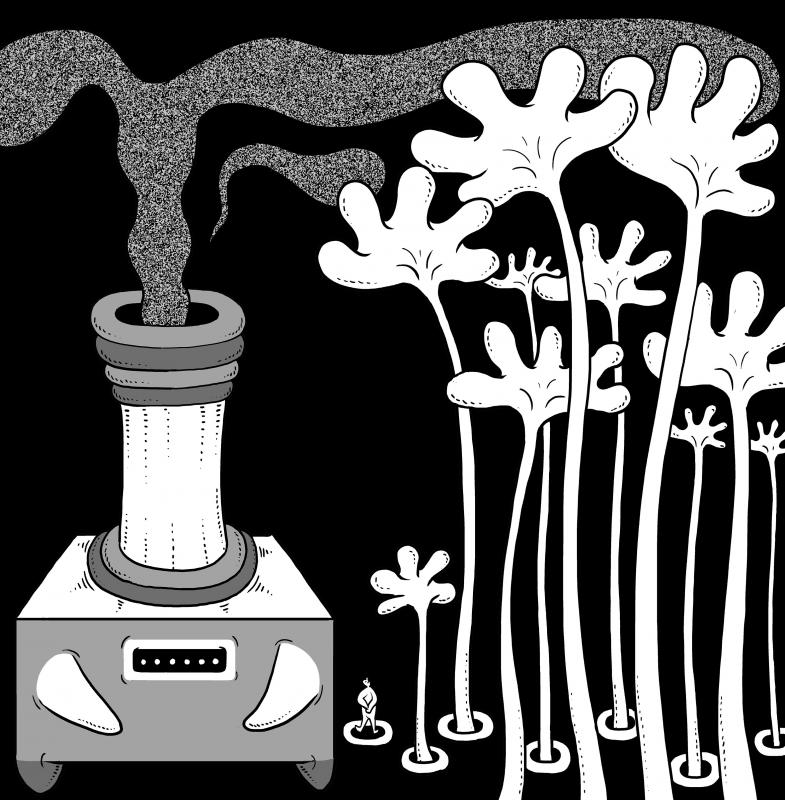In the run-up to this year’s UN Climate Change Conference in Glasgow (COP26), a growing number of companies hopped on the sustainability bandwagon, declaring commitments to achieve carbon neutrality — net-zero carbon-dioxide emissions — by the middle of the century.
Among the many ambitious announcements to come out of COP26 is that almost 500 financial-services firms have “agreed to align US$130 trillion — some 40 percent of the world’s financial assets — with the climate goals set out in the Paris agreement, including limiting global warming to 1.5°C.”
However, many commentators have been skeptical about such proclamations, suggesting that they amount to greenwashing. Critics point to corporations’ heavy reliance on “offsetting,” which has become an increasingly important — and controversial — issue in the broader climate debate. So great is the confusion about what is real and what is not that the Taskforce on Scaling Voluntary Carbon Markets, led by UN Special Envoy for Climate Action and Finance Mark Carney, has established a new governance committee to review corporate emissions pledges.

Illustration: Mountain People
The skeptics are right to be concerned about the use of offsets. The world needs to get to net-zero by the middle of the century, and it cannot do that with offsets. Companies buy offsets precisely so that they can continue emitting greenhouse gases while claiming that their emissions are zero, net of the offsets. The very existence of an offset means that the purchaser’s emissions are not zero.
However, not all offsets are alike. The critics focus on offsets in which one company or country pays another to reduce emissions and then claims the reduction as its own. This is the kind of offset that cannot be allowed if the world as a whole is to get to zero emissions. There is a place, however, for offsets generated by removing greenhouse gases from the atmosphere, for example by direct air capture or forest growth. If a company emits 100 tons of carbon dioxide and then removes the same amount, its net emissions really are zero. If all companies do this, the world as a whole will achieve net-zero emissions.
True, the recourse to forestry requires a cautionary note. Growing trees raises issues of both additionality and permanence — additionality because it is hard to be sure that the forest growth would not have occurred anyway, and permanence because there is a risk that the forest will burn, a problem that has grown more visible and severe in recent years.
Still, offsets can play a positive role. The costs of reducing greenhouse gas emissions, and the willingness and ability to pay for such reductions, vary greatly from country to country, depending on the sources of its emissions and its stage of development. Some countries may not be willing or able to pay for an expensive reduction in emissions at home but could still pay for less costly reductions abroad. When this happens, an offset market can facilitate a reduction in emissions that would not otherwise have occurred, or that would not occur without a policy that penalizes carbon dioxide emissions.
In this case, offsets may be useful at least in moving the world closer to net-zero emissions, but to reach the finish line, they will have to be phased out at some point. There ultimately is no place for offsets in a zero-emissions world.
In the meantime, policymakers and business leaders would do well to attend to a related issue that has been neglected: the failure to distinguish between so-called scope-one, scope-two and scope-three emissions.
Scope one refers to emissions that arise from a company’s own operations, whereas scope two applies to those associated with the production of electric power purchased by the company, and scope three to those arising from other parts of the supply chain, particularly from the consumption of the product.
Clearly, there is potential for massive double counting here if one adds up all the emissions across companies. If my company purchases electricity from a local utility, the associated emissions are scope two for me and scope one for the utility. If Exxon sells jet fuel to American Airlines for use in Boeing aircraft, the emissions are scope three for Exxon and Boeing, and scope one for American Airlines. These emissions are counted three times, which is anathema to any competent accounting system. Every scope-two or scope-three emission is someone else’s scope-one emission.
Fortunately, such confusion is avoidable. If every company has reduced its scope-one emissions to zero, aggregate corporate emissions will be zero. It therefore makes sense for every company to focus only on this factor. If scope-one emissions are brought to zero, scope-two and scope-three emissions will take care of themselves.
This should help to simplify the general policy guidance and instructions given to companies: Focus on reducing your scope-one emissions, plan on phasing out offsets over the long run, and continue to look for opportunities to remove greenhouse gases from the atmosphere, as these reductions can still be counted against your own scope-one emissions.
Geoffrey Heal is a professor of social enterprise at Columbia Business School.
Copyright: Project Syndicate
The government and local industries breathed a sigh of relief after Shin Kong Life Insurance Co last week said it would relinquish surface rights for two plots in Taipei’s Beitou District (北投) to Nvidia Corp. The US chip-design giant’s plan to expand its local presence will be crucial for Taiwan to safeguard its core role in the global artificial intelligence (AI) ecosystem and to advance the nation’s AI development. The land in dispute is owned by the Taipei City Government, which in 2021 sold the rights to develop and use the two plots of land, codenamed T17 and T18, to the
US President Donald Trump has announced his eagerness to meet North Korean leader Kim Jong-un while in South Korea for the APEC summit. That implies a possible revival of US-North Korea talks, frozen since 2019. While some would dismiss such a move as appeasement, renewed US engagement with North Korea could benefit Taiwan’s security interests. The long-standing stalemate between Washington and Pyongyang has allowed Beijing to entrench its dominance in the region, creating a myth that only China can “manage” Kim’s rogue nation. That dynamic has allowed Beijing to present itself as an indispensable power broker: extracting concessions from Washington, Seoul
Taiwan’s labor force participation rate among people aged 65 or older was only 9.9 percent for 2023 — far lower than in other advanced countries, Ministry of Labor data showed. The rate is 38.3 percent in South Korea, 25.7 percent in Japan and 31.5 percent in Singapore. On the surface, it might look good that more older adults in Taiwan can retire, but in reality, it reflects policies that make it difficult for elderly people to participate in the labor market. Most workplaces lack age-friendly environments, and few offer retraining programs or flexible job arrangements for employees older than 55. As

Donald Trump’s return to the White House has offered Taiwan a paradoxical mix of reassurance and risk. Trump’s visceral hostility toward China could reinforce deterrence in the Taiwan Strait. Yet his disdain for alliances and penchant for transactional bargaining threaten to erode what Taiwan needs most: a reliable US commitment. Taiwan’s security depends less on US power than on US reliability, but Trump is undermining the latter. Deterrence without credibility is a hollow shield. Trump’s China policy in his second term has oscillated wildly between confrontation and conciliation. One day, he threatens Beijing with “massive” tariffs and calls China America’s “greatest geopolitical